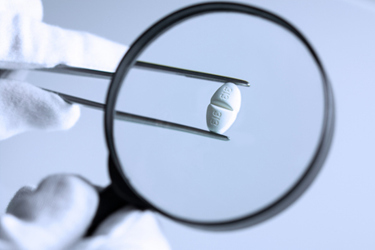Oral Solid Dosage Formulation And Process Development: A Case Study
By Michelle Gischewski, KM Consulting-Pharma Intelligence LLC

In my previous article, “Drug Product Formulation & Process Development: The Must-Have Skills At A Glance,” I discussed some important considerations when developing a new drug product. One of those considerations involves the decision of which dosage form and which specific manufacturing process would be more appropriate for a specific phase of the drug development. Some factors can play an important role in this decision-making: the sponsor’s preference, the physical-chemical characteristics of the active pharmaceutical ingredient (API), the in vitro and in-vivo results of the proposed prototypes, and the preliminary stability study results of the proposed formulation candidates. This article expands the discussion about this topic with a real-world case study, with the objective of explaining some of the thought process of an expert in the field of drug product formulation and process development when dealing with challenging compounds.
This case study involves a drug substance that is currently in the preclinical phase. The compound has shown promising results in the selected animal models and the sponsor has now to develop a drug product formulation and process to enter the first-in-human clinical phase. The sponsor requested the development of an oral solid dosage form, preferably tablets, to match the comparator drug in the market. The sponsor understands, however, that the dosage forms developed for Phase 1 clinical study do not always need to match exactly the dosage form that will eventually be commercialized, if equivalence bridging studies are executed as the program advances. To preserve confidentiality, the name of the drug substance and its indication will not be disclosed.
API Physical Chemical Characteristics, Enabling Technologies, And Animal In-Vivo Testing
The drug product formulation and process development team assessed the results obtained from the API full physical, chemical, and solid-state characterization. Some of its characteristics could pose a challenge for the drug product formulation development phase, for example:
- Log P >5, which indicates high lipophilicity of the compound
- Extremely low solubility in aqueous media across the physiological pH (1.2–6.8), which indicates that enabling technologies would be required to warrant the solubilization and, subsequently, absorption of the API during in vivo administration as an oral solid dosage form.
These characteristics do not come as a surprise since most recently developed new chemical entities (NCEs) have poor aqueous solubility. Based on this trend, pharmaceutical companies have adapted and expanded their efforts toward API solubilization enhancement. For the API in this case study, the following technologies were assessed:
- Particle size reduction: The API had a particle size distribution in the micron size range, which originated from its synthetic process. To reduce the particle size even further, to the nanosize range, the team proposed using nanomilling technology. Nanomilling technology is a wet process that requires the use of a liquid vehicle in which the API is not soluble in. In this case, water was the selected vehicle that rendered a final liquid nanosuspension for trials. The nanosuspension was used in animal models for pharmacokinetic (PK) profile evaluation. The results were satisfactory, with moderate oral bioavailability around 50%.
- Amorphization through spray drying: The crystalline structure of the API was converted into amorphous form through spray drying technology. The API was sprayed alone or with a polymer. Polymers are normally used to improve the stability of the amorphous dispersion. In this case study, several polymers were evaluated. All the solid amorphous dispersions that were produced were encapsulated in hard gelatin and HPMC capsules and used in animal models for PK profile evaluation. The results indicated poor oral bioavailability (around 10%) for all prototypes.
- Use of lipid-based excipients: Several lipid-based excipients, alone or in binary and tertiary combinations, were used to produce a final solution or emulsion containing the API. The final lipid-based formulations were encapsulated in HPMC capsules or administered in liquid form by oral gavage in animal models for PK profile evaluation. The results indicated poor bioavailability (around 10%) for all prototypes that were tested. The preliminary analytical results of the prototypes also revealed a significant increase in impurities.
The results from the animal PK studies pointed toward a superior oral bioavailability of the API in its crystalline form compared to its amorphous form. One potential explanation could be associated with the fact that the amorphous API was not sufficiently stable in the proposed formulations to withstand all the enzymes and pH fluctuations during transit in the gastrointestinal tract of the selected animal models. The unstable amorphous form potentially crashed back and re-crystallized again in the gastrointestinal lumen. One could assume that the particle size of the re-crystallized material was not in a range that facilitated the absorption, which was the case of the nanosuspension. On the other hand, the nanosized API in its crystalline form had its solubility facilitated due to an increase in surface area, which could have potentially facilitated the interaction of the API with the natural emulsifiers that are present in the gastrointestinal tract, facilitating the solubilization and subsequent absorption of the compound. Another potential explanation could be related to the nanosize range of the API, which could have potentially facilitated the active intake of the compound by the enterocytes that are present in the gastrointestinal membrane, contributing to its increased absorption.
From a drug product formulation and process development standpoint, the nanosuspension was selected as the most favorable formulation to proceed to the next steps. It could be further developed as an oral liquid dosage form to support the needs of a first-in-human clinical trial; however, to meet the sponsor’s expectation, it was selected as the main intermediate product, which would be processed further into an oral solid dosage form.
Formulation And Process Development Assessment
Three different formulation and processes were evaluated to convert the nanosuspension into an oral solid dosage form:
- High shear wet granulation: The nanosuspension was sprayed into a dry powder bed composed of selected excipients capable of incorporating the components of the nanosuspension and generating final tablets with an immediate release dissolution profile. The granules were further dried in a fluid bed drier and then compressed into tablets using a rotary tablet press. The proposed process met the expectations without any reported issues and the prototypes were placed on stability.
- Spray drying: The nanosuspension was spray dried, with the inlet temperature and atomizing pressure carefully controlled to dry the water from the nanosuspension while still preserving the crystalline structure and particle size of the API. The dried powder was blended with carefully selected excipients and then further processed into tablets through dry granulation and compression. The proposed process presented sticking challenges during compression, which were addressed by making some adjustments in the formulation. The final prototypes were placed on stability.
- Lyophilization: The nanosuspension was dried through lyophilization and the final dry powder was encapsulated in HPMC capsules and placed on stability.
Stability Study Results And Final Considerations
The stability results met the expectations for all three proposed formulations and processes. Based on all the results available, the wet granulation process was selected to advance to Phase 1 clinical trials. Some of the main factors that were considered by the experts in drug product formulation and process development were:
- Wet granulation is a more common and less expensive technology compared to spray drying and lyophilization.
- The final blend that originated from the wet granulation process presented very good processability and generated tablets that met the acceptance criteria without any reported issues. In the case of spray drying technology, the final blend presented a tendency to stick to the rollers during roller compaction and to the tablet tooling during compression. Although the issue was resolved at small scale with adjustments in the formulation, the risk of recurrence of sticking at larger scale was imminent. The lyophilization powder did not possess the desired characteristics to be further compressed into tablets and would require more extensive processing.
Conclusion
This case study illustrates an example of a poorly soluble compound that presented promising results in animal models and needed to advance toward first-in-human clinical trials as an oral solid dosage form. This article describes in more detail some important considerations during drug product formulation and process development of a new chemical entity, where the available tools are used in a risk-based and phase-appropriate approach.
The thought process used in this case study to select the best strategies for the drug product development of this small molecule can help other experts in this field who are dealing with similar situations, while also helping to expand the knowledge of other experts in the pharmaceutical industry.
About The Author:
 Michelle Gischewski is founder and principal consultant, KM Consulting-Pharma Intelligence LLC. She is a pharmacist with over 20 years of experience and was educated in Brazil and Canada. Her career has been dedicated to mastering the challenges and nuances of formulation and process development, from strategic proof-of-concept projects in the late discovery phase, through scale-up and optimization in clinical trials, and continuous improvement post-commercialization. Gischewski led scientific teams in large organizations such as Eurofins CDMO, Apotex, and Teva. She helps clients navigate the complexities of drug product development by blending scientific rigor with practical approaches.
Michelle Gischewski is founder and principal consultant, KM Consulting-Pharma Intelligence LLC. She is a pharmacist with over 20 years of experience and was educated in Brazil and Canada. Her career has been dedicated to mastering the challenges and nuances of formulation and process development, from strategic proof-of-concept projects in the late discovery phase, through scale-up and optimization in clinical trials, and continuous improvement post-commercialization. Gischewski led scientific teams in large organizations such as Eurofins CDMO, Apotex, and Teva. She helps clients navigate the complexities of drug product development by blending scientific rigor with practical approaches.
